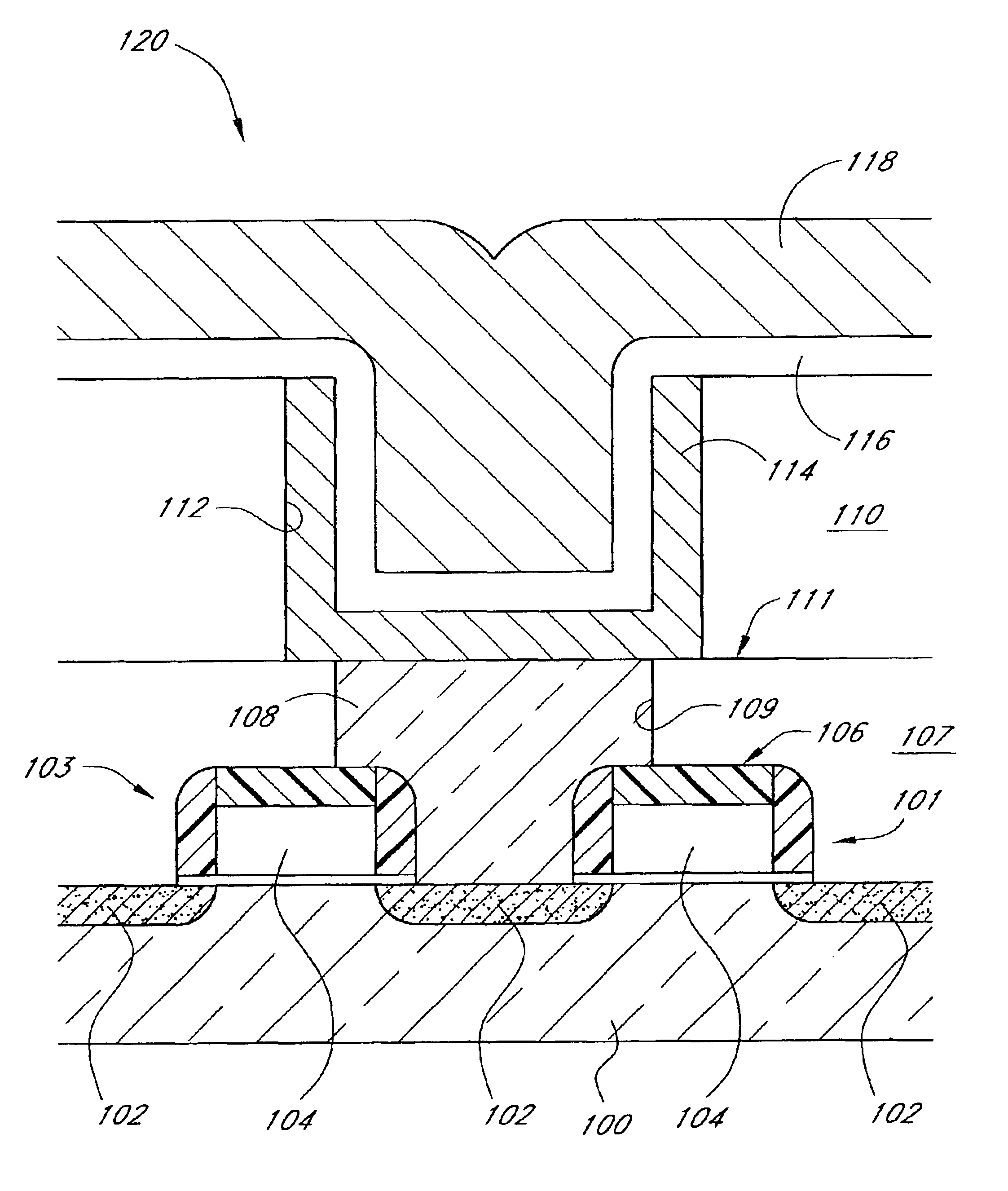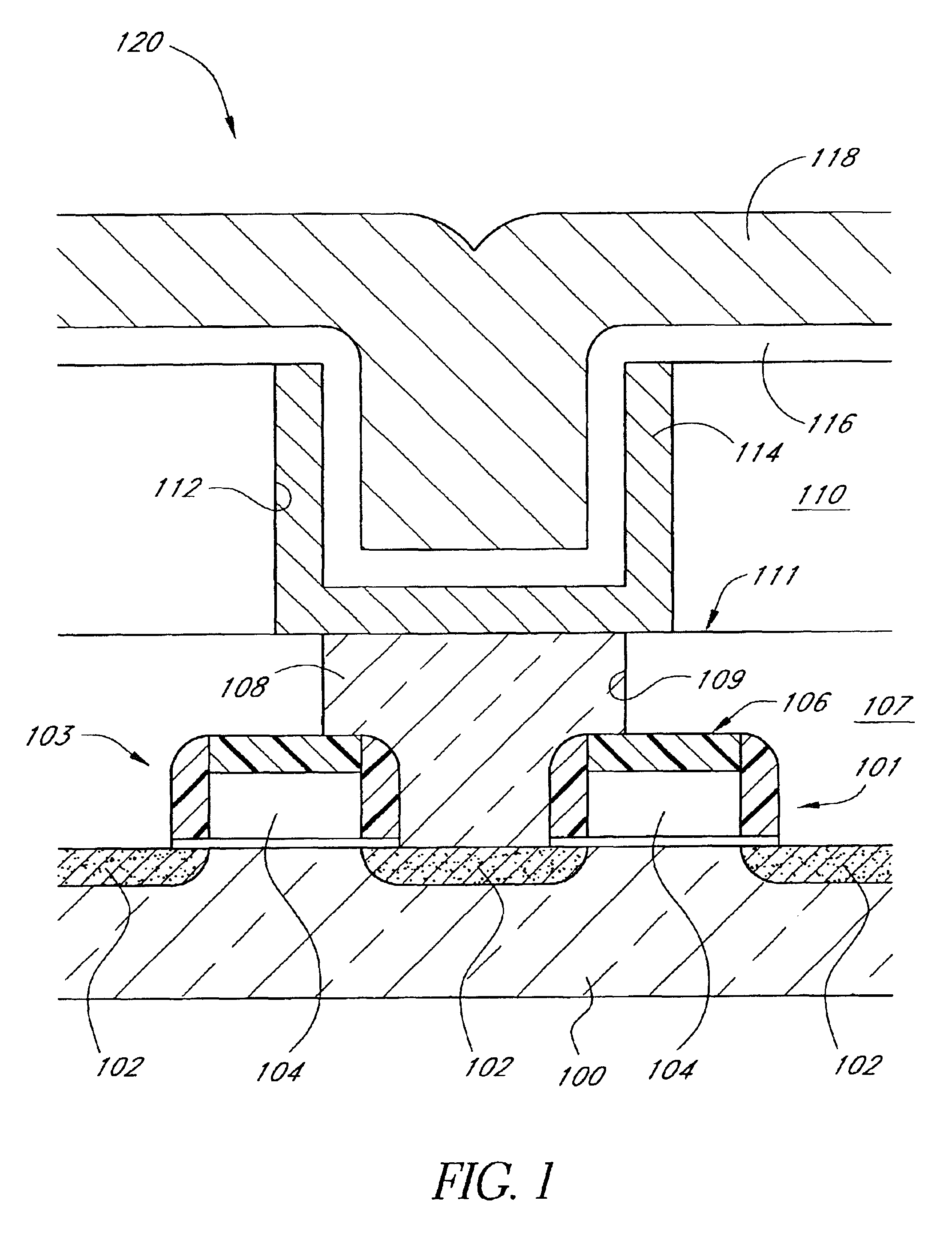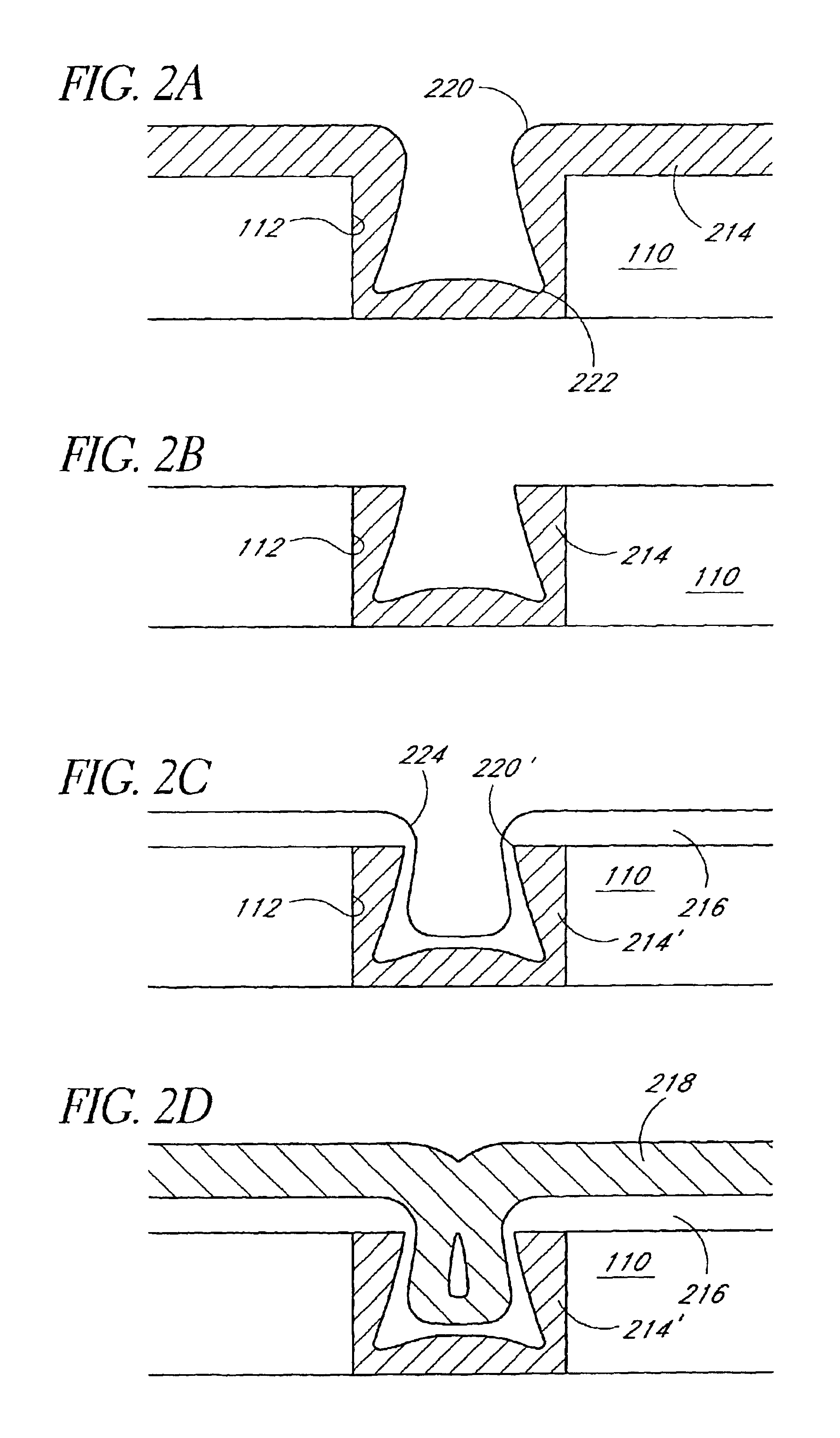Integrated capacitors fabricated with conductive metal oxides
a technology of integrated capacitors and metal oxides, which is applied in the direction of coatings, transistors, chemical vapor deposition coatings, etc., can solve the problems of difficult integration of these materials into the fabrication process flow, surrounding materials are subject to degradation, and surrounding oxidizable materials, including the polysilicon plug and the silicon substrate below, are still subject to degradation, etc., to achieve the effect of improving the uniformity and reliability of the capacitor and facilitating integration
- Summary
- Abstract
- Description
- Claims
- Application Information
AI Technical Summary
Benefits of technology
Problems solved by technology
Method used
Image
Examples
Embodiment Construction
[0029]Although the present invention is described in the context of fabricating memory devices, those skilled in the art of integrated capacitor fabrication will readily find application for the principles disclosed herein in many other contexts.
[0030]In order to understand the context in which the preferred embodiments are employed, reference is made to FIG. 1, in which a basic structure of a container capacitor is illustrated over a semiconductor substrate 100. As will be understood by the skilled artisan, the substrate 100 can comprise the upper portion of an intrinsically doped, monocrystalline silicon wafer, an epitaxial semiconductor layer, or other semiconductor material in which the lowest level of devices are formed.
[0031]As shown in FIG. 1, a plurality of transistors 101, 103 is fabricated in and above the substrate 100, and a first layer of insulating or dielectric material 107 is formed thereover. Generally, this insulating layer 107 comprises a form of oxide, such as bo...
PUM
| Property | Measurement | Unit |
|---|---|---|
| dielectric constant | aaaaa | aaaaa |
| dielectric constant | aaaaa | aaaaa |
| dielectric constant | aaaaa | aaaaa |
Abstract
Description
Claims
Application Information
 Login to View More
Login to View More - R&D
- Intellectual Property
- Life Sciences
- Materials
- Tech Scout
- Unparalleled Data Quality
- Higher Quality Content
- 60% Fewer Hallucinations
Browse by: Latest US Patents, China's latest patents, Technical Efficacy Thesaurus, Application Domain, Technology Topic, Popular Technical Reports.
© 2025 PatSnap. All rights reserved.Legal|Privacy policy|Modern Slavery Act Transparency Statement|Sitemap|About US| Contact US: help@patsnap.com



